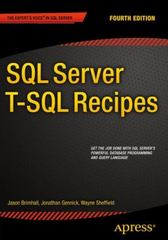Answered step by step
Verified Expert Solution
Question
1 Approved Answer
Question 1 ( a ) A 1 , 5 0 0 - byte block of data is transmitted between two computers using Idle Repeat Request
Question
a A byte block of data is transmitted between two computers using Idle Repeat
Request RQ protocol over three different links: Link a km of coaxial cable at a
transmission rate of Mbs; Link a km leased line at a transmission rate of Mbs;
Link a km free space satellite link at a transmission rate of Mbs
i Determine the transmission delay for each link, ie the time taken by the
computers transmitter to upload the frame onto each link.
ii Determine the propagation delay, ie the minimum time required for the
transmitting computer to receive the transmission acknowledgement ACK or
NAK for each communication link. Assume that the velocity of propagation of the
signal in Links and is
kms and in Link it is
kms
iii Find out which of the effects, the transmission delay, the propagation delay, or
both, determine the total roundtrip delay associated with each link, and thus
explain and conclude for which link the Idle RQ protocol is suitable and for which
it is not.
b A Fast Ethernet transmits at Mbs over a km optical fibre cable bus with a Carrier
Sense MultipleAccess with Collision Detection CSMACD protocol in operation. Due to
very low level of losses, the optical fibre bus does not need repeaters. The speed of signal
in optical fibre is kms The Ethernet frame is shown in Figure below:
Figure
i Calculate the minimum frame size which is consistent with the CSMACD protocol,
and the minimum payload. Assume that margin bits should be added.
ii The station attempts to transmit bytes of data and is forced to use the truncated
binary exponential backoff algorithm after successive collisions were detected.
Calculate the minimum and maximum waiting times for the station in this case, and
the time required to transmit bytes of data.Question continued
c The characters A B FLAG, ESC are encoded by the Logical Link Control LLC protocol
as follows: A B FLAG ESC The
characters are framed into a single LLC frame and are transmitted as a continuous binary
bitstream A B FLAG ESC. Show the binary bit sequence for the entire LLC frame when
the following framing method is used:
i Byte count
ii Flag bytes with byte stuffing
iii Flag bits with bit stuffinga A byte block of data is transmitted between two computers using Idle Repeat
Request RQ protocol over three different links: Link a km of coaxial cable at a
transmission rate of ; Link a km leased line at a transmission rate of ;
Link a km free space satellite link at a transmission rate of
i Determine the transmission delay for each link, ie the time taken by the
computer's transmitter to upload the frame onto each link.
ii Determine the propagation delay, ie the minimum time required for the
transmitting computer to receive the transmission acknowledgement ACK or
NAK for each communication link. Assume that the velocity of propagation of the
signal in Links and is and in Link it is
iii Find out which of the effects, the transmission delay, the propagation delay, or
both, determine the total roundtrip delay associated with each link, and thus
explain and conclude for which link the Idle RQ protocol is suitable and for which
it is not.
b A Fast Ethernet transmits at over a km optical fibre cable bus with a Carrier
Sense MultipleAccess with Collision Detection CSMACD protocol in operation. Due to
very low level of losses, the optical fibre bus does not need repeaters. The speed of signal
in optical fibre is The Ethernet frame is shown in Figure below:
Figure
i Calculate the minimum frame size which is consistent with the CSMACD protocol,
and the minimum payload. Assume that margin bits should be added.
ii The station attempts to transmit bytes of data and is forced to use the truncated
binary exponential backoff algorithm after successive collisions were detected.
Calculate the minimum and maximum waiting times for the station in this case, and
the time required to transmit bytes of data.
Question continued
c The characters A B FLAG, ESC are encoded by the Logical Link Control LLC protocol
as follows: A B FLAG ESC The
characters are framed into a single LLC frame and are transmitted as a continuous binary
bitstream A B FLAG ESC. Show the binary bit sequence for the entire LLC frame when
the following framing method is used:
i Byte count
ii Flag bytes with byte stuffing
iii Flag bits with bit stuffing

Step by Step Solution
There are 3 Steps involved in it
Step: 1

Get Instant Access to Expert-Tailored Solutions
See step-by-step solutions with expert insights and AI powered tools for academic success
Step: 2

Step: 3

Ace Your Homework with AI
Get the answers you need in no time with our AI-driven, step-by-step assistance
Get Started


